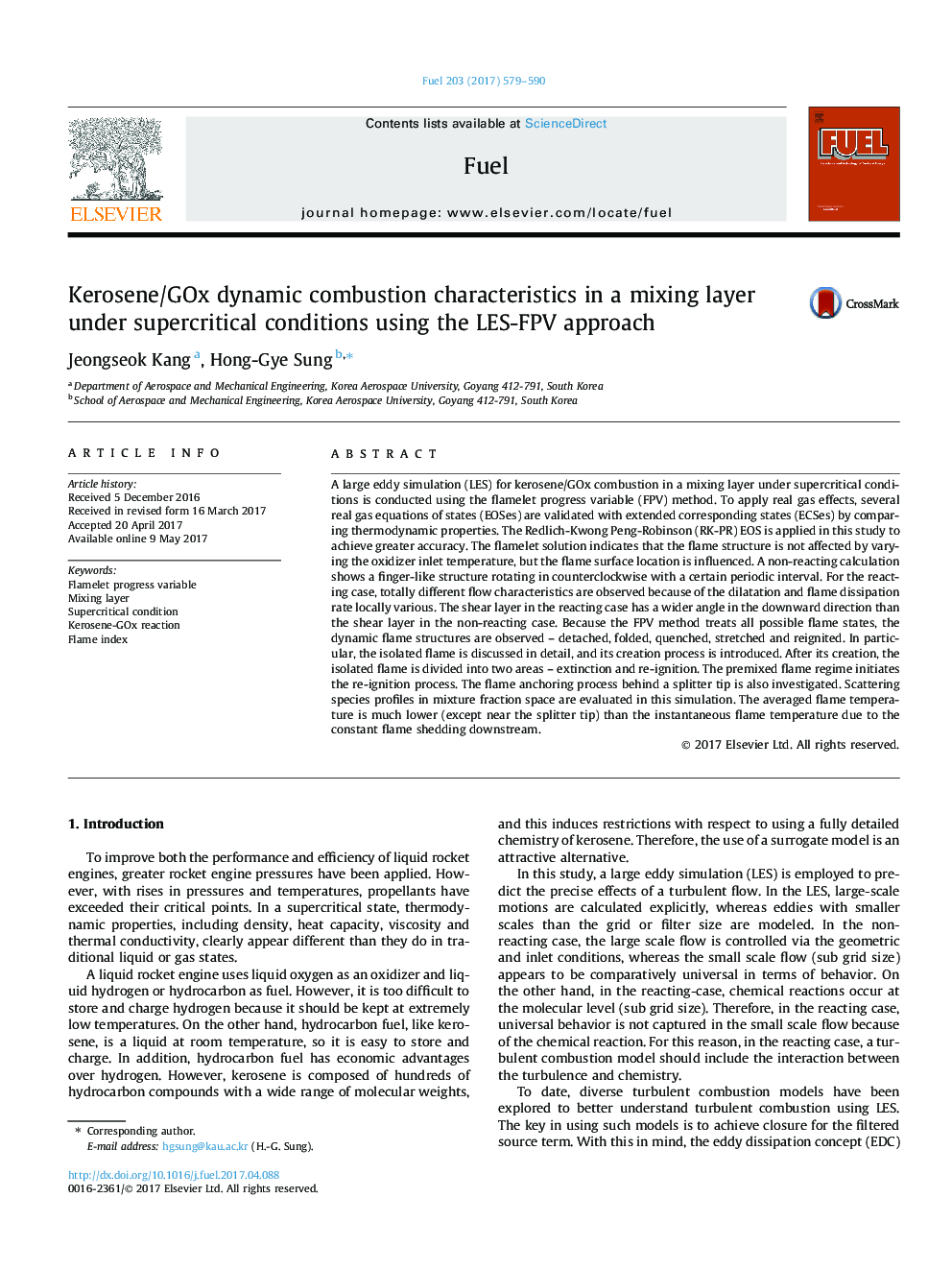| کد مقاله | کد نشریه | سال انتشار | مقاله انگلیسی | نسخه تمام متن |
|---|---|---|---|---|
| 6474402 | 1424961 | 2017 | 12 صفحه PDF | دانلود رایگان |

A large eddy simulation (LES) for kerosene/GOx combustion in a mixing layer under supercritical conditions is conducted using the flamelet progress variable (FPV) method. To apply real gas effects, several real gas equations of states (EOSes) are validated with extended corresponding states (ECSes) by comparing thermodynamic properties. The Redlich-Kwong Peng-Robinson (RK-PR) EOS is applied in this study to achieve greater accuracy. The flamelet solution indicates that the flame structure is not affected by varying the oxidizer inlet temperature, but the flame surface location is influenced. A non-reacting calculation shows a finger-like structure rotating in counterclockwise with a certain periodic interval. For the reacting case, totally different flow characteristics are observed because of the dilatation and flame dissipation rate locally various. The shear layer in the reacting case has a wider angle in the downward direction than the shear layer in the non-reacting case. Because the FPV method treats all possible flame states, the dynamic flame structures are observed - detached, folded, quenched, stretched and reignited. In particular, the isolated flame is discussed in detail, and its creation process is introduced. After its creation, the isolated flame is divided into two areas - extinction and re-ignition. The premixed flame regime initiates the re-ignition process. The flame anchoring process behind a splitter tip is also investigated. Scattering species profiles in mixture fraction space are evaluated in this simulation. The averaged flame temperature is much lower (except near the splitter tip) than the instantaneous flame temperature due to the constant flame shedding downstream.
Journal: Fuel - Volume 203, 1 September 2017, Pages 579-590